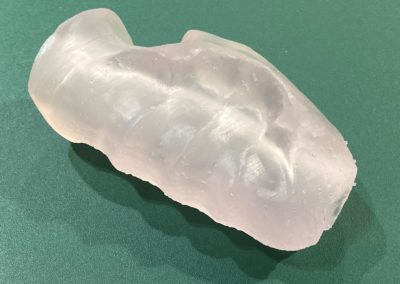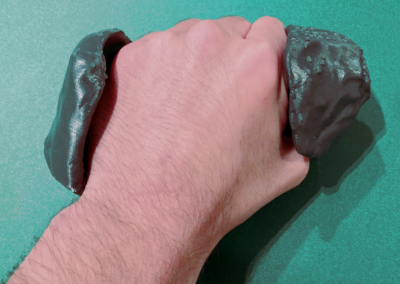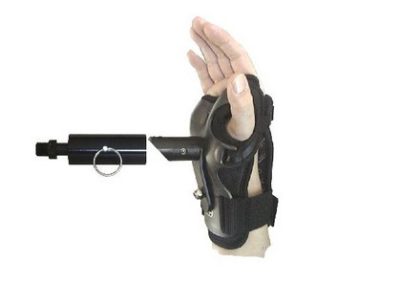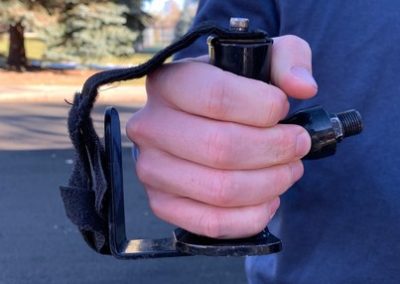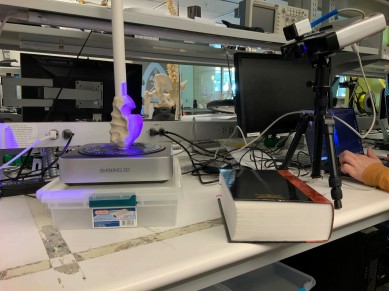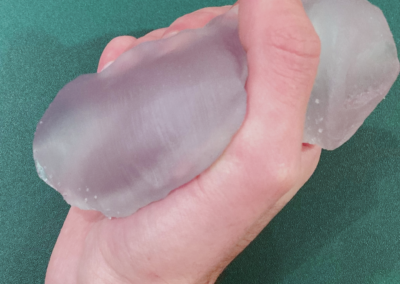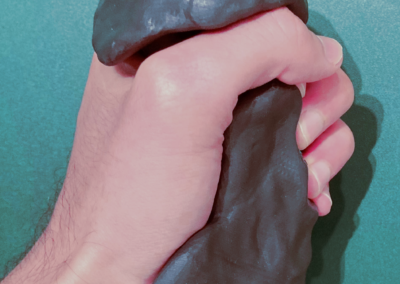Customized Hand Cycle Grips
Overview
Handcycles are a form of adaptive cycles that are extremely versatile and can offer a fitness or competitive outlet to people with a variety of disabilities due to the customizability of the cycles [1]. Our client, Adaptive Adventures, hosts the largest adaptive cycling program in Denver [2]. They provide a wide variety of adaptive sports equipment to users of all ages and skill levels. They often require their equipment to be easily adjustable, as their clientele often require different levels of assistive technologies. The current solutions used by Adaptive Adventures are painfully uncomfortable and cannot be used on prolonged rides [3]. Their company reached out to the Human Centered Design Studio (HCDS) in hopes of finding a solution to this problem.
Grip disabilities can be caused by a variety of factors and differs in severity from person to person. Symptoms can include weak grip, numbness, hand pain, clumsiness, and fatigue [4]. These symptoms can be caused by arthritis, nerve damage, hand injuries, or sports related issues such as tennis elbow or carpal tunnel. Due to these symptoms, the discomfort caused by inadequately designed handcycle grips could be compounded and in some cases may make any damage to the hand worse over time. Our project hopes to create a comfortable assistive grip to increase the accessibility of handcycling.
The team designed a working prototype that addresses all these issues. The support system focuses on the heel of the hand to give the rider a solid point of contact while also minimizing the possibility of the hand to slip off the grip. The grip also provides support at the thumb without being too bulky and gives riders access to the shifting levers. The designed prototype will enable Adaptive Adventures to better serve its riders who require assistive grips a comfortable, efficable solution.
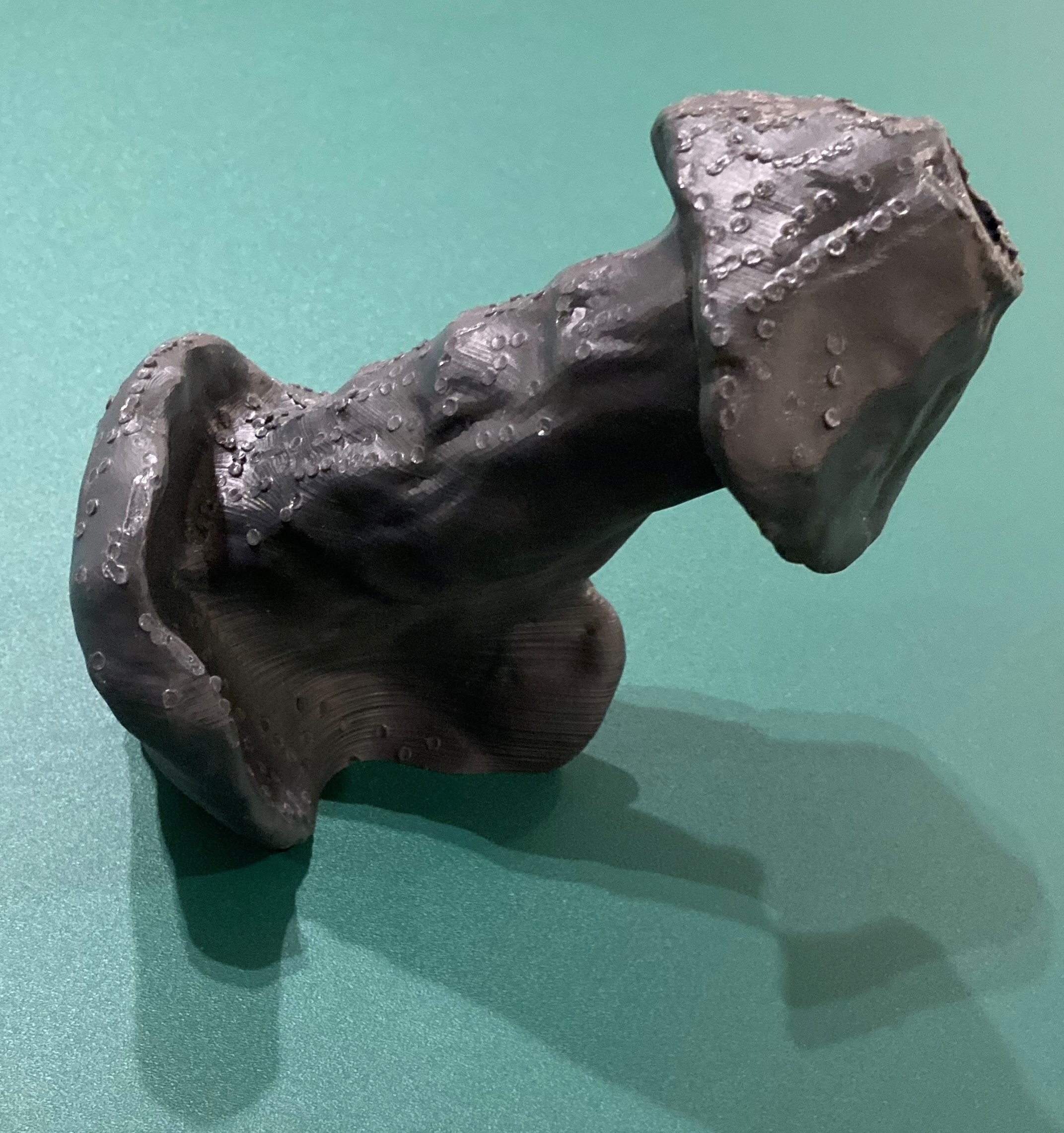
Final Prototype Design
Top: Initial ( Left) and Final (Right) Grip Prints
Bottom: Current Solutions used by Adaptive Adventures are expensive (Left) or uncomfortable (Right) for long rides
Live Zoom Chat
Use the link below to join us live from 8:00 – 10:30 a.m. on April 28th.
Or iPhone one-tap: 16699006833,99400512352# or 12532158782,99400512352#
Or Telephone:
Dial: +1 669 900 6833 (US Toll) or +1 253 215 8782 (US Toll)
Meeting ID: 994 0051 2352
Team Members
- Henry Burkle
- John Bickerstaff
- Claire Gormley
- Jacob Karty
- Ryan Middle
The Client
- Adaptive Adventures
Acknowledgements
Project Advisor: Dr. Chelsea Salinas and Dr. Sue Anderson
Technical Advisor: Dr. Joel Bach
Donations Made by: Adaptive Adventures
Video
Elevator Pitch
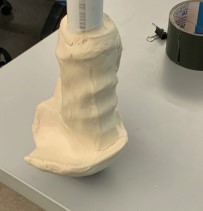 This project’s goal was to provide our client, Adaptive Adventures, an alternative to assistive grips for their handcycle users. Current designs on the market are costly and uncomfortable. Of the current solutions out there, Adaptive Adventures commonly uses a skateboarding wrist pad which is pinned to the cranks. While this does allow the rider to transfer force to the cranks, the solution is highly uncomfortable, especially on long rides.
This project’s goal was to provide our client, Adaptive Adventures, an alternative to assistive grips for their handcycle users. Current designs on the market are costly and uncomfortable. Of the current solutions out there, Adaptive Adventures commonly uses a skateboarding wrist pad which is pinned to the cranks. While this does allow the rider to transfer force to the cranks, the solution is highly uncomfortable, especially on long rides.
The hand grips this team designed kept the users needs first and foremost. The final design incorporates maximum support at the heel of the hand which allows force transfer without grip strength requirements. The team also took into consideration potential hand-slipping, and provided support to mitigate the risk of a user’s hand sliding off. Another key functionality point of the design also leaves the user with full access to the shifting levers. These grips were designed to be easily installed onto an existing handcycle, which will allow Adaptive Adventures to easily swap the grips onto any of the handycles in their fleet to provide riders the support they need.
3D Scan Setup (Left), Inital Prototype Heel Support/Ergonomics (Center), Final Prototype Heel Support/Ergonomics (Right)
Your content goes here. Edit or remove this text inline or in the module Content settings. You can also style every aspect of this content in the module Design settings and even apply custom CSS to this text in the module Advanced settings.
Design Approach
The team’s progress began with reviewing the previous teams handgrip design. These initial 3D scans looked promising, but the team was worried about the overall support these grips would give the rider. Seen on the right are the initial iterations of the design. The team kept the ergonomic design of these grips but decided to improve on the support and overall structure to ensure the users hands would be secured in place when cycling, akin to pedal cages seen on mountain bikes. With these ideas in mind, along with client input, the team constructed decision matrices to best determine how to succinctly solve these issues. From these discussions, the route chosen was to increase the amount of material present at the heel of the hand, as well as provide additional support at the thumb. These small changes in the design were expected to have a large impact on the efficacy of the grips. By adding these additional supports, the grips remained ergonomically comfortable and suitable for long rides, while still eliminating the need for grip strength to operate the handcycle.
For the manufacturing decision, the team settled on taking 3D scans of a clay-molded grip, where the end-user would place their hand around some clay to get a good definition of where their fingers and palms would rest on a grip. Additional support material was added in the critical locations, and the mold was 3D-scanned to allow further manipulation using CAD software. This allowed the team to make multiple prototypes and make necessary adjustments to the model quickly.
The next step was to determine how much support the riders may need, as well as refine the material options for the grips. To determine the best design, the team had printed two prototypes, one with less heel support and a more elastic, flexible resin (the white/clear grip seen in the photos), and a design incorporating further heel and thumb support with a stiffer elastic resin. These two designs will give the client multiple options to best serve his clientele with the wide range of grip limitations. With client and user feedback, the design will be further refined, and adjustments can be made quickly. The design setup allowed the team the necessary flexibility to quickly pinpoint critical design considerations and incorporate input towards the next iteration. This resulted in an efficient route to the final design solution.

Prototype Decision Matrix

Material Decision Matrix

Connection Decision Matrix
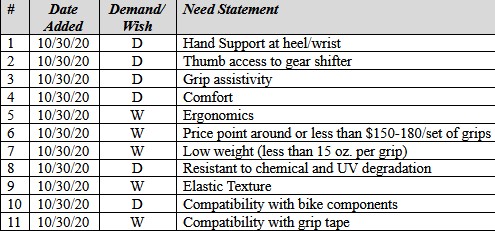
Clients Demands and Wishes
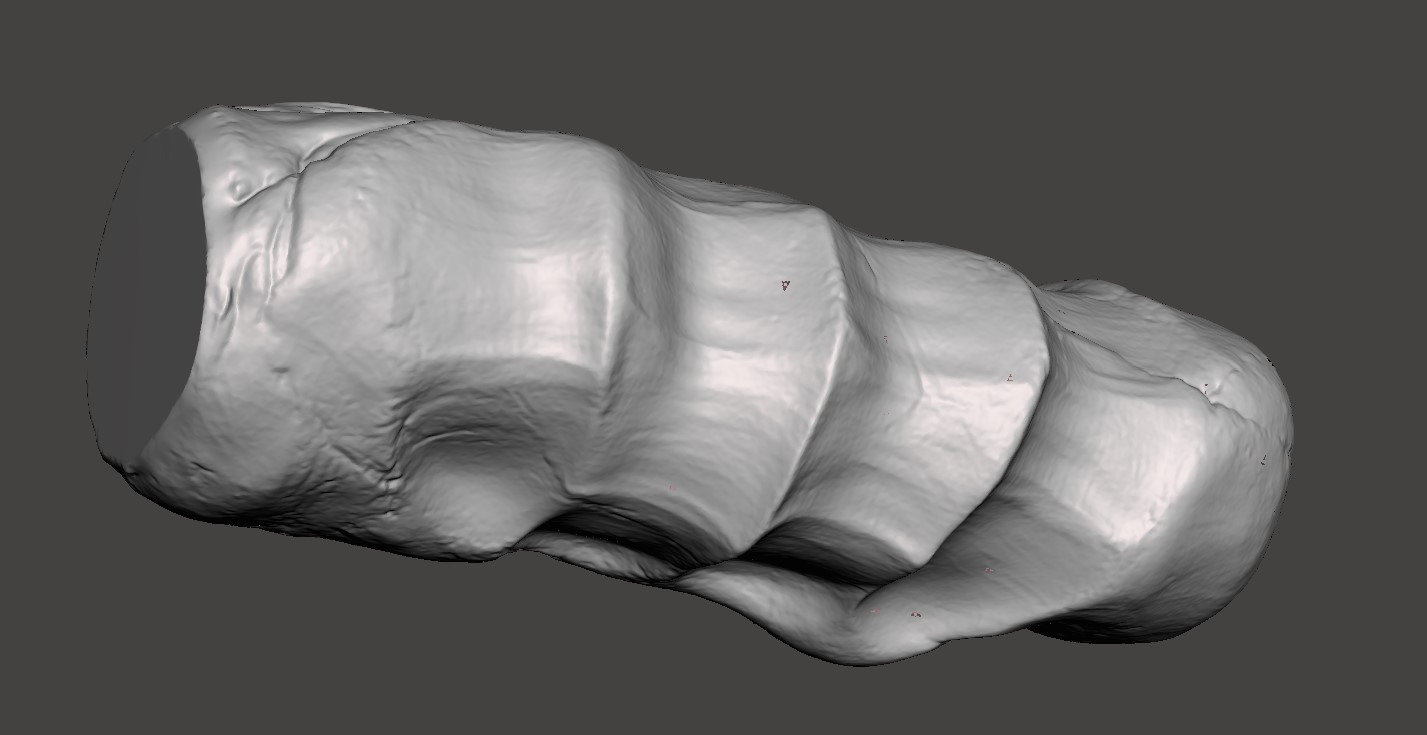
Version 1 Prototype 3D Scan
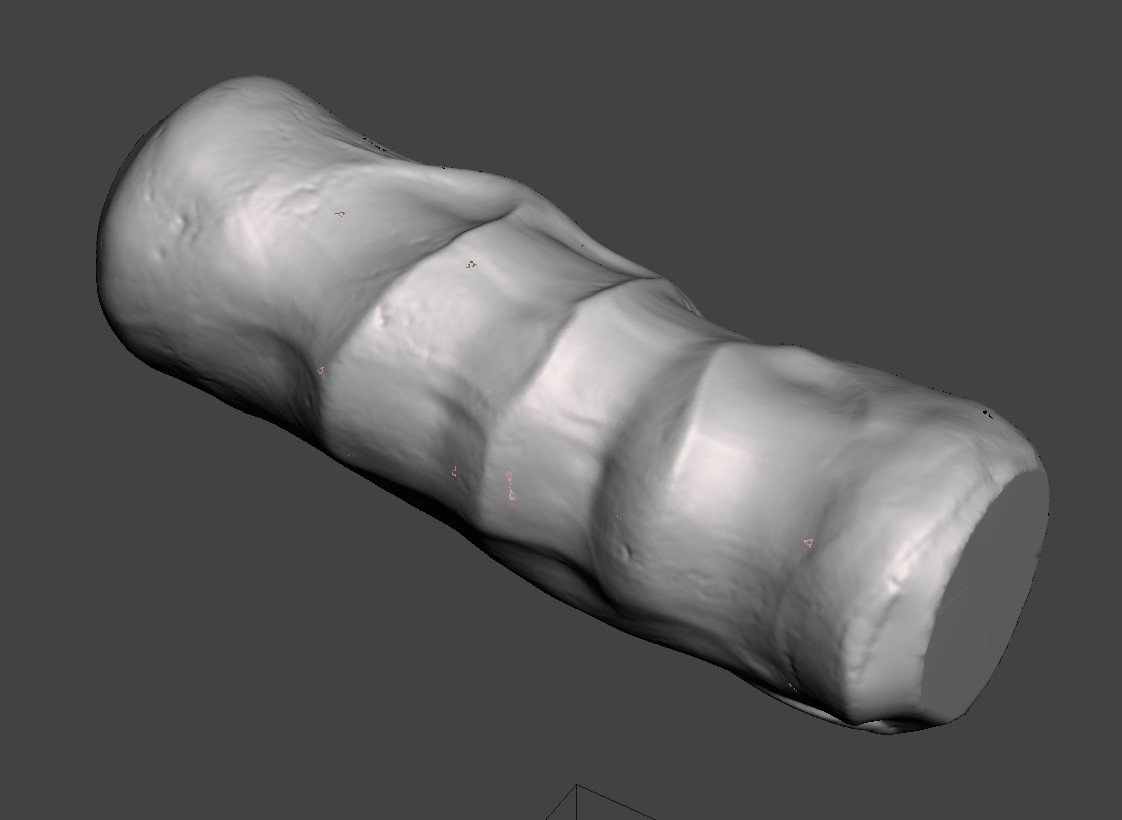
Version 2 Prototype Scan
Design Solution
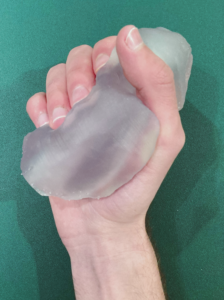
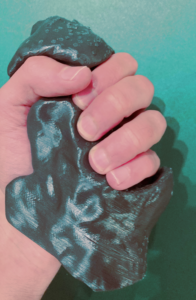 The finalized design utilized the HCDS 3D scanning and 3D printing capabilities to produce the ergonomic hand grips. The process involved placing clay around a PVC pipe that mimicked the handcycle crank. The user then placed their hand around the clay to create an ergonomic design and allowed each of their fingers to be placed comfortably. Additional clay was added at the heel and base of the hand to prevent hand-slipping and maximize force transfer without the need for grip strength. Once the necessary clay was added, 3D imaging software was used to convert the mold to an STL file (a file that can be read and edited by computer aided design software, as well as 3D printed). A 22.5mm nominal hole size was then extruded from the center of the grip for easy integration onto a handcycle bar.
The finalized design utilized the HCDS 3D scanning and 3D printing capabilities to produce the ergonomic hand grips. The process involved placing clay around a PVC pipe that mimicked the handcycle crank. The user then placed their hand around the clay to create an ergonomic design and allowed each of their fingers to be placed comfortably. Additional clay was added at the heel and base of the hand to prevent hand-slipping and maximize force transfer without the need for grip strength. Once the necessary clay was added, 3D imaging software was used to convert the mold to an STL file (a file that can be read and edited by computer aided design software, as well as 3D printed). A 22.5mm nominal hole size was then extruded from the center of the grip for easy integration onto a handcycle bar.
The two prototypes designed this semester were made from different elastic filaments with different properties. The white material is slightly more flexible than the black filament. User interviews, along with further testing of the durability of each material will determine the final product. Other key differences in these two prototypes include the varying support at the heel and thumb of the hand. By giving our client various options, we ensured that the chosen design meets his specific needs.
Next Steps
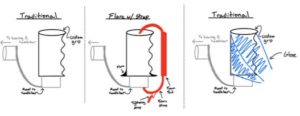 The next steps in this product’s design phase is to get an experienced handcyclist to use the grips, and provide feedback on support and feel. This will provide crucial information on how to better continue forward and give the team insight on what may need to be changed. With the current designs on the market being either uncomfortable or highly expensive, the team hopes to eventually create a mass-producible product with a standard set of sizes (S, M, L). The current design process requires a 3D scan of an individual’s hand, where support material is added at the heel and thumb to provide support and reduce the risk of hand-slipping while remaining ergonomical. While this allows for a high level of customization, there can be changes in the current design to create a standard set of grips for the general public. The other key feature that is to be added in the future is a strap attachment which users can insert their hand into to further mitigate hand-slipping issues. Preliminary designs of the straps to be used can be seen here, and further feedback from client testing will provide the team with further direction on which design best fits.
The next steps in this product’s design phase is to get an experienced handcyclist to use the grips, and provide feedback on support and feel. This will provide crucial information on how to better continue forward and give the team insight on what may need to be changed. With the current designs on the market being either uncomfortable or highly expensive, the team hopes to eventually create a mass-producible product with a standard set of sizes (S, M, L). The current design process requires a 3D scan of an individual’s hand, where support material is added at the heel and thumb to provide support and reduce the risk of hand-slipping while remaining ergonomical. While this allows for a high level of customization, there can be changes in the current design to create a standard set of grips for the general public. The other key feature that is to be added in the future is a strap attachment which users can insert their hand into to further mitigate hand-slipping issues. Preliminary designs of the straps to be used can be seen here, and further feedback from client testing will provide the team with further direction on which design best fits.
Meet the Team
Henry Burkle
Henry is a graduating senior in Mechanical Engineering with a minor in Recording Technology. He plans to find work in the manufacturing industry working with LEAN processes and manufacturing process design. He enjoys Skateboarding, Hiking, Swimming, Biking and a host of other outdoor activities.
John Bickerstaff
 John is a graduating senior in Mechanical Engineering. After graduation he will be moving to California to pursue a career in neurovascular medical devices. John has been skiing for a majority of his life and enjoys anything outdoors.
John is a graduating senior in Mechanical Engineering. After graduation he will be moving to California to pursue a career in neurovascular medical devices. John has been skiing for a majority of his life and enjoys anything outdoors.
Claire Gormley
 Claire is a graduating senior in Mechanical Engineering. She has experience instructing adaptive skiing and sailing in Colorado and is planning to stay in this great state after graduation.
Claire is a graduating senior in Mechanical Engineering. She has experience instructing adaptive skiing and sailing in Colorado and is planning to stay in this great state after graduation.
Jacob Karty
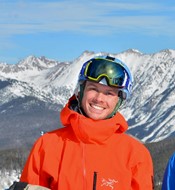 Jacob is a graduating senior in Mechanical Engineering. He will be attending the University of Illinois for his MS is Health Technology in the fall. Jacob was born and raised in Colorado and enjoys skiing, hiking, and golfing.
Jacob is a graduating senior in Mechanical Engineering. He will be attending the University of Illinois for his MS is Health Technology in the fall. Jacob was born and raised in Colorado and enjoys skiing, hiking, and golfing.
Ryan Middle
 Ryan is a first semester senior in Mechanical Engineering with a minor in Biomechanical Engineering. He plans to pursue his masters and PhD in biomechanics, specifically focusing on injury mechanics and rehabilitation. He enjoys skiing, mountain biking, and being outdoors when not in the classroom.
Ryan is a first semester senior in Mechanical Engineering with a minor in Biomechanical Engineering. He plans to pursue his masters and PhD in biomechanics, specifically focusing on injury mechanics and rehabilitation. He enjoys skiing, mountain biking, and being outdoors when not in the classroom.
Works Cited
[1] “Hand Cycling,” Move United. Accessed: Nov. 28, 2020 [Online]. Available: https://www.moveunitedsport.org/sport/hand-cycling/.
[2] Adaptive Adventures, Adaptive Adventures, 2017. Accessed on: Nov. 30, 2020. [Online]. Available: https://adaptiveadventures.org/about/
[3] User interview with Chris Weigand of Adaptive Adventures
[4] Katie Street, Jeffrey M. Rothschild, “Hand Weakness Symptoms, Causes & Common Questions”, Aug. 26, 2020. Accessed on: Nov. 30, 2020. [Online]. Available: https://www.buoyhealth.com/learn/hand-weakness/
